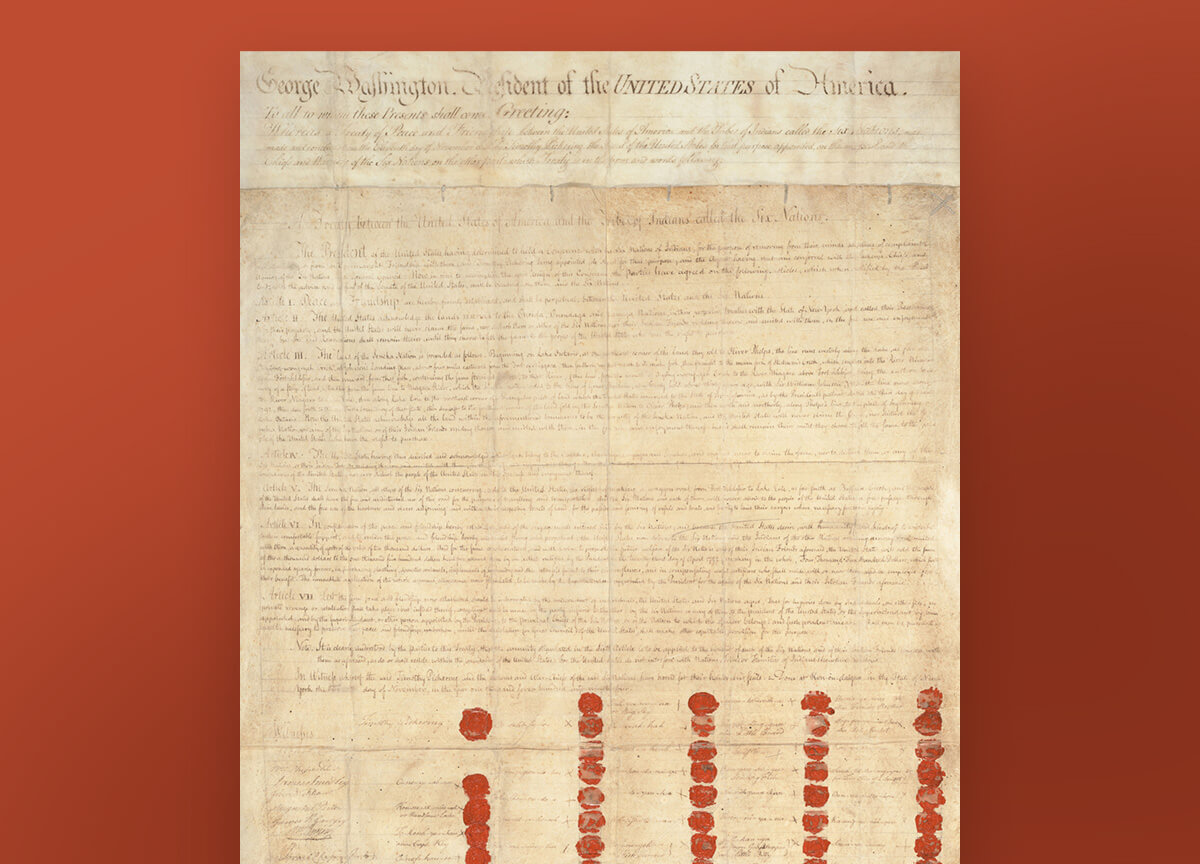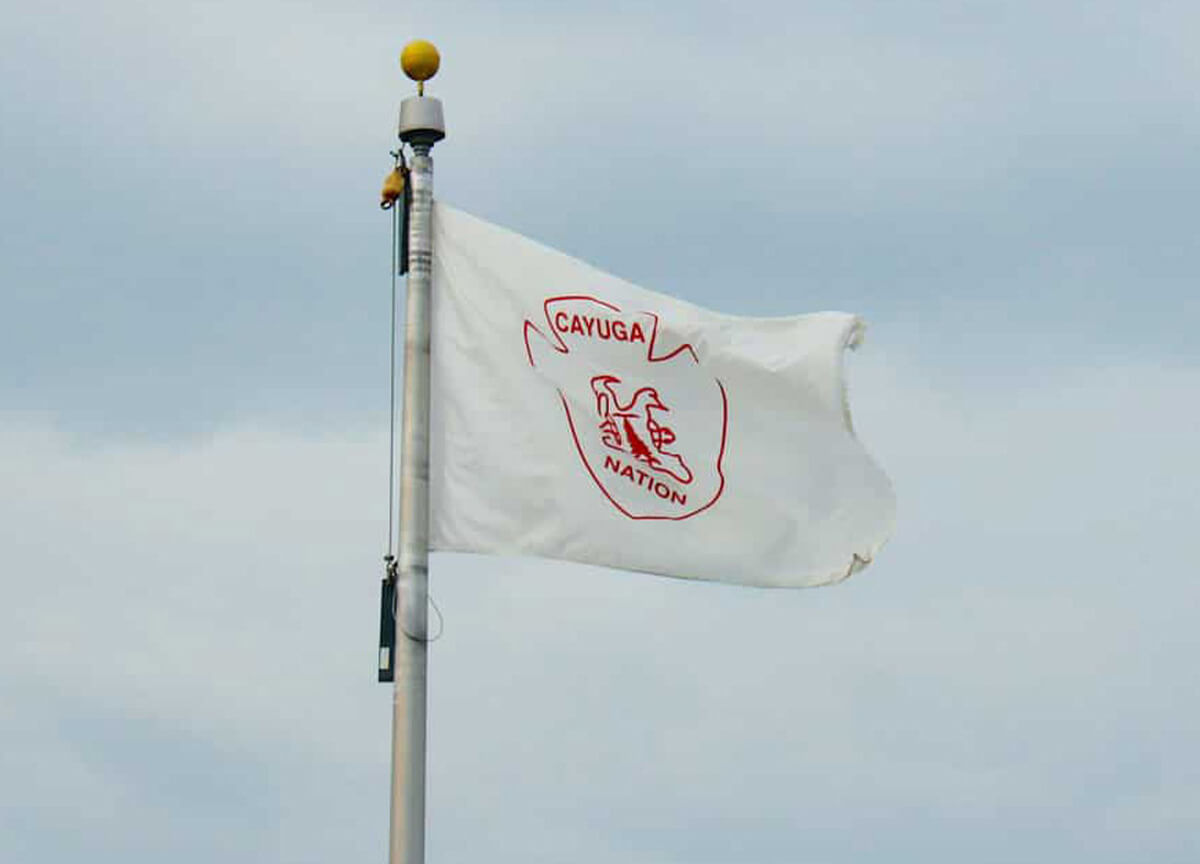- News
- Canandaigua Treaty of 1794
Canandaigua Treaty of 1794
The Canandaigua Treaty of 1794 is a treaty between the United States of America and The Five Nations known as the Haudenosaunee Confederacy (Seneca, Cayuga, Onondaga, Oneida, and Mohawk – sometimes refers also to the Tuscarora).
This treaty was signed in Canandaigua, New York on November 11, 1794, by sachems (chiefs) representing the Haudenosaunee’s Grand Council and Colonel Timothy Pickering, who served as the official agent of President George Washington.
The Haudenosaunee Confederacy sent 1,600 representatives to the treaty council, the U.S. sent Pickering and General Isarael Chapin. Quaker representatives were invited by the Senecas to serve as mediators because they were seen as trustworthy people who could read English and help ensure fair negotiations.
“Brother, we are of the same opinion with the People of the United States, you call yourselves free and independent, we as the Ancient inhabitants of this Country and sovereigns of the soil, say that we are equally free as you, or as any other nation, or nations under the sun…”
Clear Sky, Onondaga Sachem to General Israel Chapin
21st April 1794
Council at Buffalo Creek
The seven articles of the Canandaigua Treaty established peace and friendship between the U.S. and the Haudenosaunee. It acknowledged and reaffirmed Haudenosaunee sovereignty and land rights – our ancestral lands are our property, never to be disturbed or taken by force. Federal boundary lines were meticulously adjusted to prevent further encroachment on Haudenosaunee territory, reflecting a commitment to preserving the integrity of native lands. A noteworthy provision, Article 7, was established to settle disputes between native and non-native individuals on each other’s territories. This pragmatic approach to conflict resolution fostered a framework for peaceful coexistence between the Haudenosaunee and their neighbors.
Although the promise of friendship that embodies this treaty has been strained and there have been many violations of the treaty, it remains valid and recognized as such by the Haudenosaunee and the U.S. government. Despite the legality and authority of this sovereign Treaty, through a series of illegal land transactions and treaties, New York State has taken all the lands of the Cayuga Nation. Article 2 of the Constitution provides that “treaties are binding agreements between nations and become part of international law”. Treaties become the supreme law of the land.
For 217 years, the Cayuga Nation was landless. That ended in 2011, when we had to repurchase our lands and reestablish ourselves as a people. We will continue to fight for the return of the remainder of our land as promised by George Washington and the Treaty of 1794.









